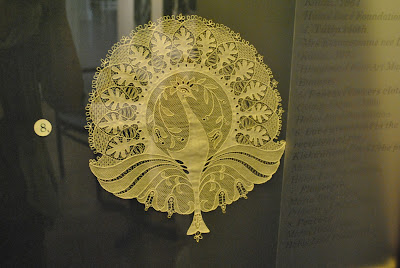Hello my readers! Here is a little DIY for you as I promised!

Tools and ingredients:
- Chain noise plies (wrapped with pliers)
- Wire cutter (cutters)
- 2 semi-precious stone beaded turqouse
- 1.5-2mm aluminum or copper wire
- 0.25 mm aluminum wire
- 50 cm 3-6 inch cutting chain cuts
- 2 piece bronze hangers for the ear
Step 1: Wrap the thick wire and make little spiral shape for the hanger that we will add the chain in the end.
Step 2: Wound around the thinner wire and start at the bottom of the spiral wire; after that make a good sustain for the pearl.
Step 3: With the thin wire sustain introduce the pearl and adjust the wire frame.
Step 4: After you introduce the pearl in the frame, start making a new spiral form design in the bottom.
Step 5: At the bottom of the spiral we introduce with a little help of the thin wire the
Step 6: the upper districts of the earring comes the wire clip.
While writing this tutorial I have realized that you can do more with your own imagination with semi-precious or plastic pearls.
I prefer to use the semi-precious stones because of their pattern, color and light, some semiprecious pearls are too elegant but adding wire it makes it more daily wearable.
In each execution of the wire the design is modified so there is no pattern for this kind of preparation mode. The length of the chain is not stable you can use longer or shorter ones. The ending of the chain can be left like this ore you can add some pearls at the end.
The result is wonderful, you can use as a week day earring or an elegant accessory.
Have a nice weekend and enjoy your free days! Don’t forget to push the like button, if you have questions just hit the ASK bar. This tutorial was prepared for you by AngelBijou. If you want to order something from her just click here and leave a message.
I prefer to use the semi-precious stones because of their pattern, color and light, some semiprecious pearls are too elegant but adding wire it makes it more daily wearable.
In each execution of the wire the design is modified so there is no pattern for this kind of preparation mode. The length of the chain is not stable you can use longer or shorter ones. The ending of the chain can be left like this ore you can add some pearls at the end.
The result is wonderful, you can use as a week day earring or an elegant accessory.
Have a nice weekend and enjoy your free days! Don’t forget to push the like button, if you have questions just hit the ASK bar. This tutorial was prepared for you by AngelBijou. If you want to order something from her just click here and leave a message.























































